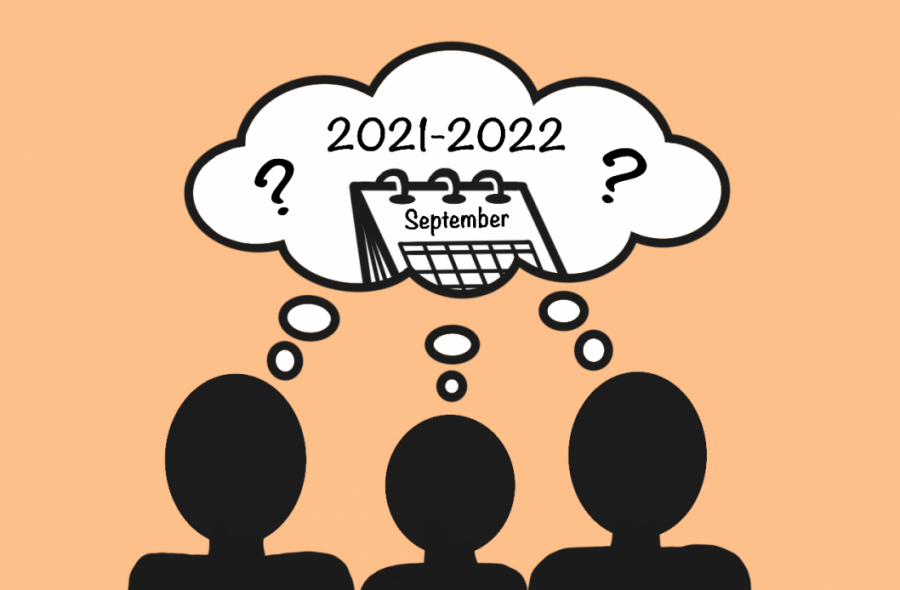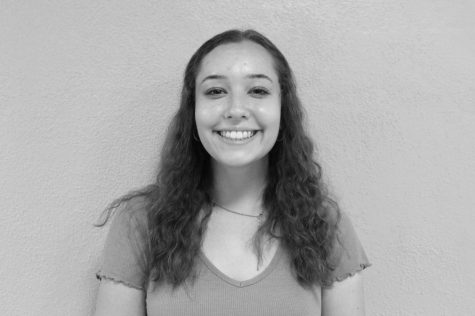Potential scheduling alterations under discussion
Task force assembled to debate changes for 2021-22 school year
Art by Emmy Pearson. In response to the start-time change for the 2020-21 school year, a task force of students, teachers, parents, and community members has been created to consider changing the high school schedule for the 2021-22 school year. The task force is debating other systems such as block scheduling.
January 30, 2020
As a result of the decision made to change the start time for the 2020-21 school year, Superintendent Astein Osei said the school began to weigh in other logistics, such as changing the high school schedule for the 2021-22 school year.
“Right now we’re going through a process, really from elementary school through high school with the start time changes, so it prompted us to look at a number of things,” Osei said. “We decided that it would be a good time to look at the high school schedule, it doesn’t appear that it has been looked at in many, many years.”
According to Osei, a team was assembled to discuss the potential scheduling changes and gather feedback from various people in the district.
“There’s a task force that was comprised and is made up of students, teachers, staff, parents and community members,” Osei said. “We meet essentially once a month, I think we started in the fall … (What) we’re going to really be doing is getting feedback from students, parents, guardians and staff about the different options or designs that the task force developed.”
Freshman Katie Crocker said she enjoys having seven periods, as it diversifies students’ experiences each day.
“I feel like it’s less boring and you’re changing more every day and you’re not stuck in the same place for as long,” Crocker said.
According to Osei, changing the schedule isn’t a finite decision, but it’s beneficial to analyze different ways of scheduling.
“I’m not sure if anything is going to necessarily change, but it’s always good to take a look at different systems and just make sure they’re still doing what you want them to do,” Osei said.
Sophomore Kim Parkinson said she enjoys the high school schedule in comparison to the schedule at the middle school.
“I like the schedule that we have now,” Parkinson said. “I like that we get two schedules a year and that we don’t have block scheduling every week because we did at the middle school and that was very annoying.”
According to Osei, the task force is taking the various needs of students into consideration, specifically mental health and teachers’ ability to work one on one with students.
“The main factors of the charge of our group is to design a schedule that is the most optimal schedule for students’ academic, social, emotional and health needs, trying to find a schedule that’s really student-centered, but also one that allows for teacher collaboration,” Osei said. “Just recognizing or believing that teachers having the ability to collaborate allows them to be more effective and supportive of the students that they serve … it’s really trying to help with the mental health aspect of it.”
Parkinson said receiving student input rather than gaining information from other schools is crucial in activating the changes desired by students.
“Asking (students) personally and figuring out what they have in mind, not going to other schools because they probably did that longer and the students had to get used to it,” Parkinson said.
Osei said he hopes there will be a decision made by the end of this school year in regards to if the school will implement a new schedule.
“Being that this wouldn’t go into effect until the 2021-22 school year, now we have some time,” Osei said. “The tricky piece is that if we are going to make a change, I personally believe it would be helpful to know by the end of this school year so that we could have next school year to do any sort of planning, professional development, communication preparation to be able to implement successfully.”




